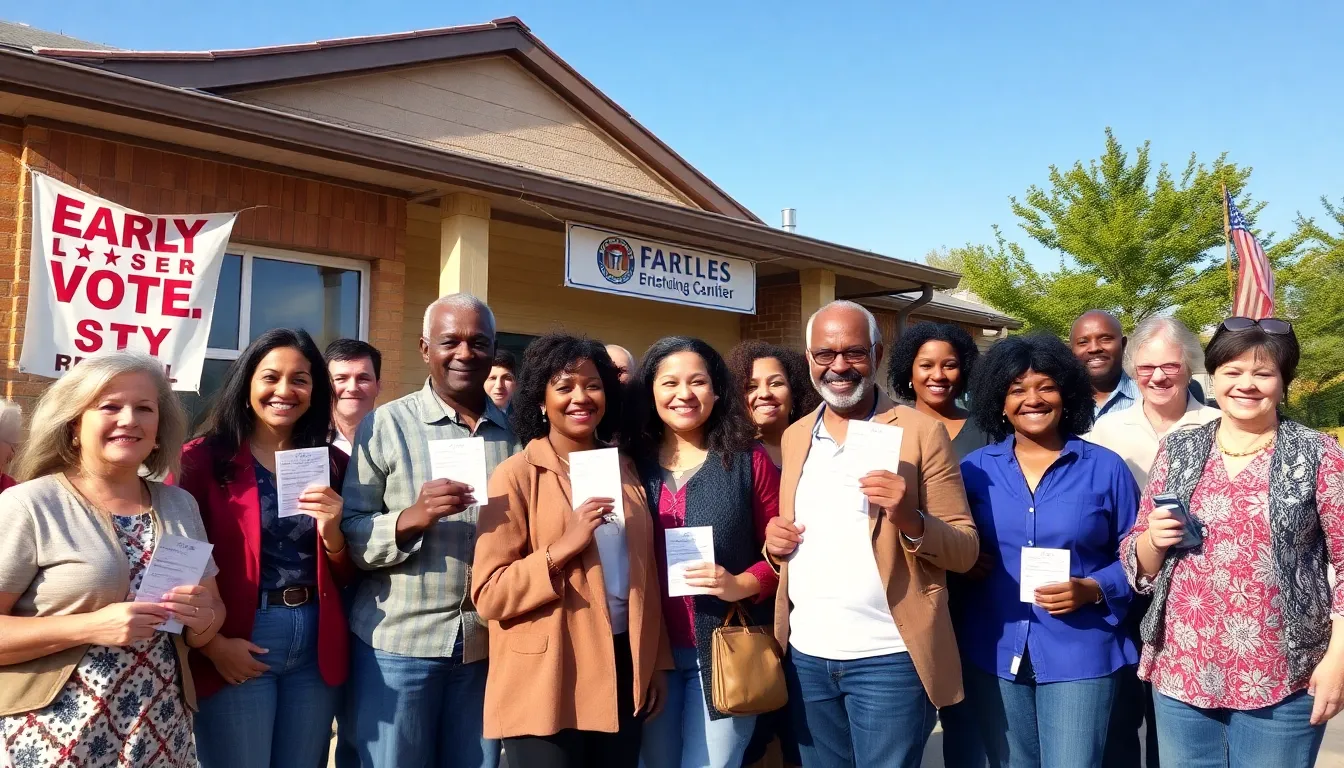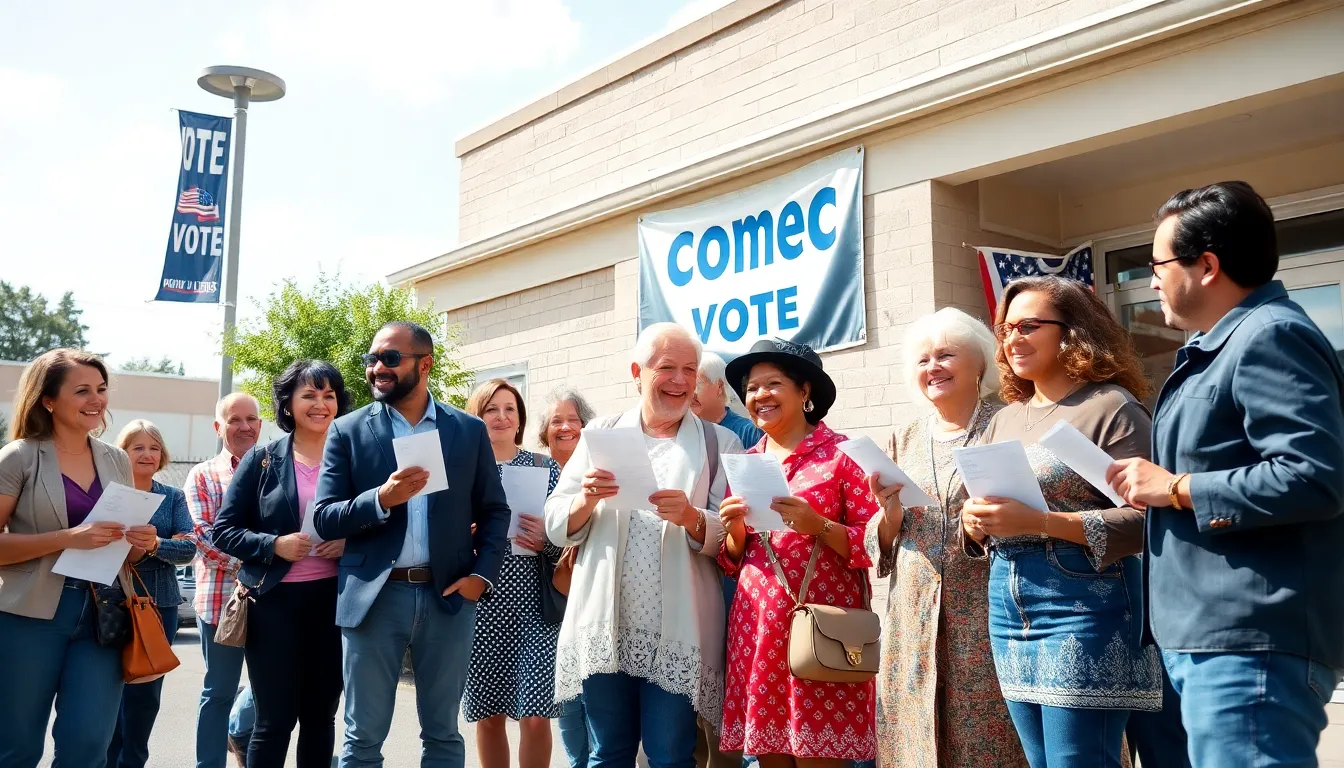As election season rolls around, the quest for early voting locations can feel like a scavenger hunt without a map. But fear not! Finding where to cast that all-important ballot ahead of time is easier than finding a parking spot at the mall during the holiday rush. With a little guidance, voters can discover their nearby polling places and avoid the last-minute chaos that often accompanies Election Day.
Table of Contents
ToggleUnderstanding Early Voting
Early voting allows voters to cast their ballots before Election Day. This process increases access and convenience, helping to reduce long lines and wait times. Most states offer designated locations for early voting, and these sites frequently differ from Election Day polling places. Identifying where these early voting locations are situated requires checking local election office websites or relevant voter information portals.
Eligibility for early voting varies by state. Some states impose specific criteria like residency, while others allow any registered voter to participate. States typically announce early voting dates weeks in advance, enabling voters to plan accordingly. By understanding local rules and timelines, individuals can make informed decisions.
Voters often cite flexibility as a primary advantage of early voting. It encourages participation from those with busy schedules or other commitments on Election Day. Many voters appreciate the ability to choose a convenient time, making the overall voting experience less stressful and more efficient.
Early voting locations generally include schools, community centers, and municipal buildings. Each venue offers accessible options to accommodate all voters. Voters are urged to verify hours of operation, which can vary from one site to another, ensuring they arrive during open hours.
Additional resources like voter assistance hotlines and online maps can further aid in locating early voting sites. By leveraging these tools, individuals maximize their chances of voting early and easily. Always stay informed about any changes or updates in early voting procedures, as these can occur close to an election.
Importance of Early Voting

Early voting plays a crucial role in the electoral process by providing greater accessibility for voters. This approach allows individuals to vote before Election Day, minimizing the risk of long lines and last-minute complications.
Benefits for Voters
Voters enjoy several advantages from early voting. Convenience ranks high, as individuals can choose a time that fits their schedules. Long waits often associated with Election Day become less of a concern. Locations like community centers, schools, and municipal buildings serve as designated sites, enhancing accessibility. Flexibility allows working individuals to avoid disruptions on Election Day. Engaging in early voting ensures voters make informed choices without feeling rushed. Additionally, many states extend early voting periods, offering more opportunities to participate.
Impact on Election Turnout
Early voting significantly influences election turnout rates. Studies show that states implementing early voting often experience higher participation compared to those restricting access. Extended accessibility encourages individuals who may struggle to vote on Election Day, such as those with work commitments or family responsibilities. Research indicates that early voting increases turnout by 10 to 15 percent in some jurisdictions. Improved turnout enhances the overall democracy by more accurately reflecting the electorate’s preferences. Higher engagement makes elections more representative of the community’s diverse voices.
Finding Early Voting Locations
Locating early voting sites involves utilizing various resources effectively. Voters can access numerous options to simplify this process.
Online Resources
Online resources play a crucial role in finding early voting locations. Websites like the National Association of Secretaries of State offer up-to-date information. Many election offices maintain dedicated pages to locate early voting sites. Additionally, Google’s voting tools allow users to search for early voting in their area quickly. Maps often display the nearest locations, making navigation straightforward. Voters should check these resources frequently to remain informed about any changes to polling sites and hours.
Local Government Websites
Local government websites provide essential information regarding early voting locations. County election offices typically list all the available sites, along with their operating hours. Clear guidelines about eligibility and specific requirements appear on these pages. Each state’s election office website often includes contact information, enabling voters to reach out for assistance. Regularly checking these sites ensures voters stay updated about the latest voting information. Engaging with local government resources proves beneficial in understanding the early voting process fully.
Tips for Early Voting
Early voting requires some preparation. Being aware of what to bring and understanding voting rights makes the process smoother.
What to Bring
Identification varies by state, so checking local requirements is essential. Voters often need a government-issued ID, utility bill, or bank statement showing their name and address. It’s also wise to bring a sample ballot for reference. This helps voters feel more confident when making choices. Having these documents ready expedites the check-in at polling locations.
Knowing Your Voting Rights
Voters possess rights that ensure fair access to the ballot. Familiarizing oneself with local laws is crucial since regulations can differ significantly by state. Individuals can vote without intimidation and receive assistance if needed. Understanding these rights empowers voters, ensuring they can report issues at the polls. Resources like voting hotlines offer guidance on addressing any concerns during early voting. Staying informed about voting rights promotes a smooth experience for everyone involved.
Common Concerns About Early Voting
Many voters express concerns regarding early voting, primarily focusing on safety and convenience.
Safety and Security
Security remains a top priority for voters. Early voting sites typically enhance security measures, including surveillance and trained personnel. States often implement protocols to ensure ballot integrity and protect voter privacy. Location choice significantly impacts perception of safety, as many sites are in secure public buildings. Voters should verify that their chosen site follows guidelines set by local election offices. Understanding that early voting locations often receive regular maintenance adds to the assurance for voters regarding a safe experience.
Accessibility Options
Accessibility options play a vital role in early voting. Many early voting sites cater to individuals with disabilities by providing features such as wheelchair ramps and accessible voting machines. Local governments generally follow the Americans with Disabilities Act to ensure compliance. Additionally, states may offer assistance for those needing help while voting, allowing individuals to have a trusted person present. Information on accessibility can usually be found on election office websites, making it easier for voters to plan ahead. Overall, aiming for inclusivity helps ensure that every individual has the opportunity to participate in the election process.
Finding early voting locations doesn’t have to be a daunting task. With the right resources and a bit of planning, voters can easily locate convenient sites that fit their schedules. By taking advantage of early voting, individuals can avoid the stress of long lines and ensure their voices are heard.
Staying informed about local resources and understanding voting rights can enhance the experience. Early voting not only promotes accessibility but also encourages higher participation rates in elections. As election day approaches, voters should prioritize early voting to make their voices count.




